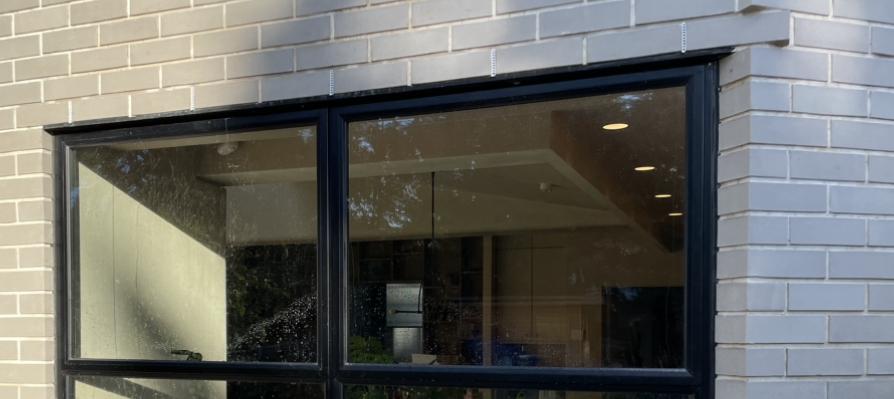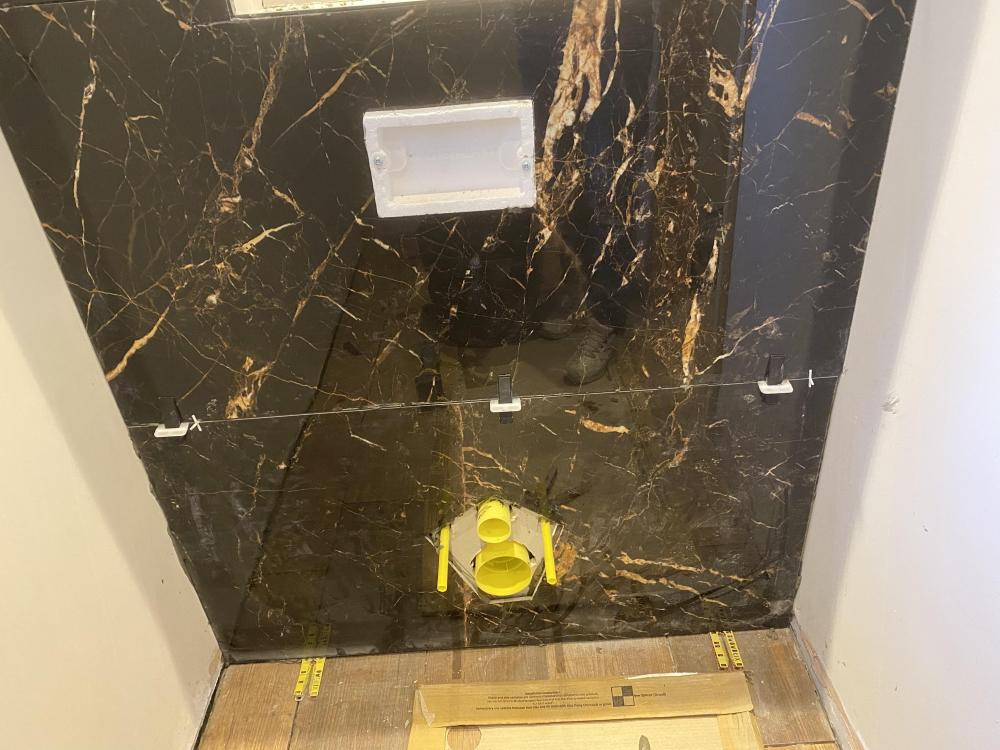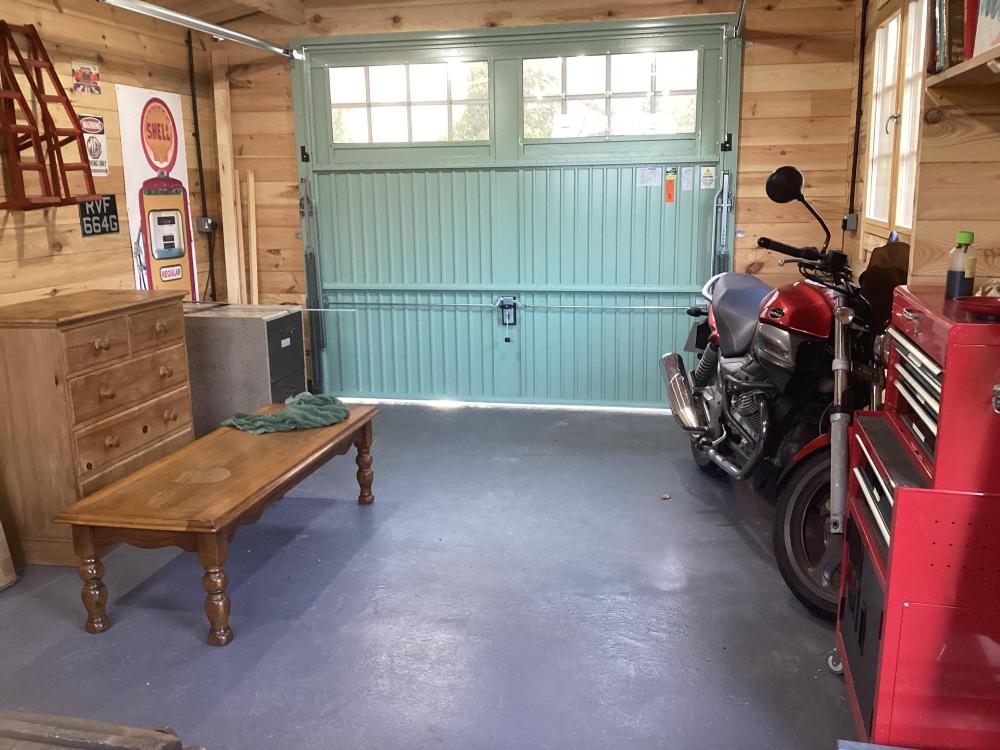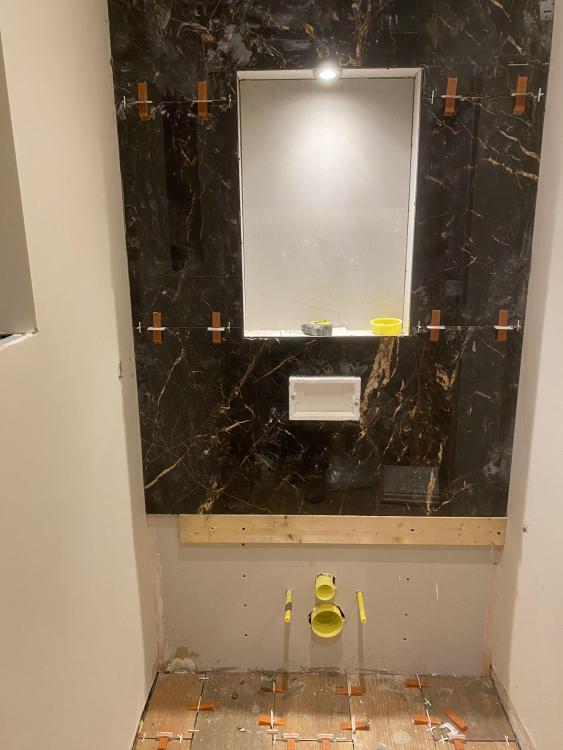Leaderboard
Popular Content
Showing content with the highest reputation on 11/11/23 in all areas
-
update: first two weep vents went in last week, final three went in yesterday. So we have 5 now, each one spaced about 42cm apart from the other, above a cavity that is about 165cm wide, so just within the NHBC requirements (not that my house was built to that standard 😂). Was a very quick job. Could have been done in half a day, but weather required a different timetable. Looks pretty tidy: They also removed the screws that the window company has drilled upwards, and filled the holes with silicone. So fingers crossed that is the end of my leak. Let’s see. Query what to do about the damp looking bricks. It is actually not the bricks themselves, but the off white mortar that has gone a bit brown around a few bricks above the lintel. Is there any harm in waiting till the wall properly dries out, I expect no sooner than April next year given we are this side of winter, and then addressing that?2 points
-
Indeed. Odd way they’ve gone about it!! Wont budge though, but should have been cordoned off not left open to access by the clients Steptoe & Sons building Co. at best.2 points
-
The safer way to demo it would have been to remove the roof first, then push the walls inwards. Leaving a RC slab up in the air was not wise, as it's old and cracked it may behave unpredictably.2 points
-
2 points
-
Not really, just keep away from it.2 points
-
A quick update. Just finished attending to the Sunamp PVs and I now have hot water! I can only speak as I find and Sunamp have delivered with fantastic customer service, admittedly they could not recommend a local service engineer, but talked me through the process including FaceTime. Far too often support from companies are promised and often fall short, not Sunamp. Maybe I was lucky. Thank you to all here and I hope I have saved Nickfromwales writing lengthy instructions.2 points
-
1 point
-
1 point
-
My No 1 tip is do it as a warm roof or hybrid roof. So air tight layer over the top of the attic joists (roof stripped completely) external insulation over the top of the joists, then batten counter batten and tiles or do the rolls royce and an in roof PV system. Take the insulation right down to the eaves don't faff about trying to exclude the eaves space from the insulated envelope. You might want a SE to check the existing attic trusses are ok for a heavier roof tile and PV.1 point
-
Nah, it's more a Q of physics, and the algo isn't that too dissimilar to how I heat my slab, but in the context my " issue is with redoing it" comment, I was really talking about SunAmp doing it.1 point
-
@MikeSharp01 that's why I like 2 off units. The PV units are quite compact (D x W x U): 530 x 300 x 740 mm so two side-by-side are a small footprint and one does use a day's HW so long as we don't want a big bath. They weigh 80 kg, so you really need a hoist and trolley to be one-man manoeuvrable. The Uniq series have a bigger footprint (W x D): 365 x 575 with height depending on capacity, so if we did decide to replace the PVs, I'd probably go for the 210e model (which is 870mm high), but I am loathed to replace the PVs after only 6 years use. And it the circuit board that is the Achilles' heel, and I really can't see what the issue is with redoing it.1 point
-
Read up about living on site in a static caravan as delays can happen and it can save a significant amount of money plus it keeps your finger on the pulse. With the best will in the world, builders don’t always measure properly/ follow plans/respect neighbours etc If it wasn’t included in the planning it should be easy to add it as it’s usually permitted. Your neighbour will be watching, so everything needs to be by the book. There is also a thread on ‘things we would have done differently’ which is very helpful. Self building can be v stressful, all the best.1 point
-
Either you put it on until it trips out on it's in-built overheat stat (this can usually be adjusted). At this point you know your tank is as hot as you can have it. Or you boost for a period of time to suit usage. This will only come from experience but a 3kW immersion in my 300ltr tank is a decent boost if on for an hour.1 point
-
He is playing with numbers, his house leaks like a seize. A passivhaus is also tested at 50Pa, they have to score 0.6 ACH or better from that test, he scored 6.4m3/m2 at the same pressure. Not quite the same scale, but close enough in this case. So using his example of dividing by 20 a passivhaus would leak at a rate 0.03 ACH.1 point
-
I definitely wouldn’t go for a s##t in there 😁1 point
-
Safe as houses, reinforced slab roof, 9 inch thick walls, it’s not going anywhere.1 point
-
I think you’re right, would appear to be encouraging more volume of modest rural home to be created to be built as opposed to vast dwellings for the wealthy. Hard not to agree with that.1 point
-
1 point
-
The roof is holding the walls up and vice versa. Maybe don't let the grandchildren play in there though.1 point
-
1 point
-
I bought the same style cheap diamond grit ones, right up to I think 100mm. They were spot on: Well lubed with a water spray I even cut brick with the big one:1 point
-
Running behind as ever, but today’s the day. I plan to; - make sure the pan fits (I.e the rods are in the right holes - draw a diamond on the plasterboard using the protrusions as a guide - take the measurements of the 4x diamond points and transfer them to my tile - connect the dots and turn the grinder on. wish me luck…1 point
-
More importantly, what bike is it? I can probably look after it for you, save you the hassle 😀1 point
-
Yes, only way to get a perfect edge is with a router and guide or clamped straight edge. Circular saw and fine (many) teeth second best and sanded with block. You must cut it face down if using a circular saw.1 point
-
Risk of a cold spot as it looks like you need to run it some distance. Would an adapter to a rectanuglar duct make it fit better? Otherwise just used a recirculating hob extractor with an standalone humidstat controlled extractor located in a more convenient location.1 point
-
I would say 15mm is pretty insignificant for a 175mm joist. The important point is drill the hole on the centreline.1 point
-
Plus 1 However the underfloor heating idea depends a lot on the amount of insulation between the source of the heat and the airgap or ground below. If you do use underfloor heating a concrete slab set on PIR insulation will indeed be a a heat store in winter and hopefully a cool store in summer. PV would be a win. What were your thoughts on hot water?1 point
-
The public information is the key plus you need to go to the council and library archives and possibly pay for a search on what if any consented alterations have been made to the house next door. You may find that the neighbours have made unauthorised alterations and that may explain their reluctance to engage. How deep have you delved into the public records? I always advise to play something like this off a straight bat. Go right back and make sure you have all the basic facts correct. It sounds brutal but if they have made alterations without consent then these don't count.. just don't warn them in case they get restrospective consent before you get your submission in.. Once you establish that you are on a sound footing and you work from there. The right to light calculations are complex when close to a boundary and they vary depending on how your project will impact on say a utility room next door or a bedroom / habitable space often called an office but still a habitable apartment. You also have over shaddowing that applies to say external spaces and privacy.. looking into their windows. This requires diplomacy as you are going to have to live next door and you don't want to fall out big time in an ideal world.. but you if you can establish what you are entitled you have a basis on which to negotiate your way ahead..as you have other things to deal with as follows.. Can you post the soil investigation report and a plan of the site showing where the tree is? What is the height of the tree, what is the trunk diameter 1.0 m above the ground, how far does the canopy extend, what is the orientation of the site in relation to the tree. It's important to understand where the tree gets it's structural support to resist the prevailing wind and nutrients from.. (which could be from a diferent direction). Then you can take view on where the roots grow and the impact it will have on your founds. Your SE is playing safe and sticking to the BC and NHBC guidance.. probably because you have not paid them enough to look at this in greater detail. Pay them an extra five / seven hundred quid to sort this out, provide a bespoke Engineering solution for your site and they could save you thousands. A bespoke solution would require your SE to have sufficient expertise in this area which not all SE do have. Can you cut the tree down and wait 18 months before building?.. a brutal approach but we are taking money here and not one I would advocate as a first option.. but if the tree is old / diseased that may be the best approach. You could go to an Arborist for a tree report that covers root propegation and life expectancy of the tree.. why adopt a complex found design if the tree is on it's last legs.. trees die like all of us! I think your SE is being cautious here as probaby does not have a lot of info to go on. Work on the premis that you'll need to some PWA notification, don't let this drive your initial design assumptions. Any pile or found that adds significant extra stress to ground you don't own basically requires consideration under the PWA. Screw piles do indeed mitigate the need for deep excavations.. but they come with potentially significant problems later on.. there is no free lunch. I would go for the simple stupid type found, get a handle on the tree, gather the facts on the neighbours position in terms of light, don't panic and take it a step at a time.1 point
-
I think you should tell them that you don't consider the problem to have been resolved if it is the same as before. However, you say that the problem has gradually returned? But from your description there seem to be some other issues going on: 1. System pressure - have you previously lost pressure in the system and have you had to top it up before? 2. Is it a problem with hot water at all outlets? If so, turn one of the most problematic outlets on and then go look at the boiler and check the water temperature shown on the display. Does it rise quickly to about 80C followed by the boiler switching off and then on again when the temperature goes back down?1 point
-
FCUs only in upstairs room, UFH only downstairs. For cooling the FCUs run when the respective rooms call for cool. As mentioned up thread there's a buffer tank on the FCU circuit and when the buffer needs charging I also run cool water (slightly higher set point temp) through the UFH too just to increase the flow rate to avoid short cycling. In essence using the slab as an additional buffer. The manifold closes off any loops for any GF rooms that are already below target temp. So using thermostat control to avoid overshoot. In practice GF just sits at a pleasant temp regardless, it's only FF that really needs active cooling. I expect a lot of cool air tumbles down the vaulted hallway and into the GF open plan area. I don't have ducted return plenums upstairs, so each room's FCU circulation goes via the landing and shared spaces to eventually get into the service riser back up to the loft where the FCUs are, so helps mix up the air and give secondary cooling to the whole building. The FCUs have multiple windings so it's 3 or 5 channels of relays per fcu to control speed. (Nit: one FCU is a massive thing salvaged from a restaurant refit, which feeds two rooms with electronic baffles on the air side to direct which room(s) receive air. So the speed I run that one at is a function of the sum or demand from those room)1 point
-
She'll have to wait a few years, I see her regularly crossing off the days mind you. ..... Yes and No. YES: I'm completely on board with the airtightness, 3g, MVHR, attention to thermal bridging. The house "coasts" so well through outside temperature variations. The bitter and extra windy weather last night was imperceptible inside. We are living more comfortably than any other house I've lived in and despite being direct electric is still much cheaper than most ASHP new builds I know to heat. In terms of KISS our CH works and a plug in rad or two doesn't get much simpler. NO: The 10w/m² peak heating load target is based on space heating of the house with supply air from the MVHR and hence is a bit arbitrary. Similarly the 15kWh/m²/annum heating demand. Doing PH can be quite an evangelical process as you have to do so much conversion of the doubters. In so it's easy to become swallowed by the doctrine. In reality 16kWh/m2/annum or 14kWh is neither here nor there and probably far outweighed by how much your kids let the door open. I would have gone for 300mm EPS floor insulation rather than 200mm and 300mm rather than 250mm EPS beads in the walls if I was to go again. The cost is marginal and would have taken us to about 8w/m² and 12kWh/m². No reason to stop at PH targets either. PH assumes 20⁰ is fine for every room. It is, but really 18/19⁰ in the bedrooms and 24/25⁰ in the bathrooms would be better. PH can put the kibosh many lovely design elements like roof lights at the cost of some minimal active heating/cooling. When we were building however almost everyone who didn't sing from the PH hymnsheet with regard to targets, airtight, heating load/demand etc was a bluffer and would have I'm sure landed us with a house that fell far short of design levels. TLDR. PH and PHPP absolutely work, use them but don't treat them as targets/limits and don't let the methodology limit you from making an excellent house an exceptional house.1 point
-
Sure, I know what "a" house looks like. Indeed, I know what several look like. I also know what elements I've liked and disliked in the 20+ houses I've lived in over the years. What I didn't know was how to design a house that would fit my family now and in the future, would work with the significant plot restraints that we had, and would feel amazing to live in. I get it, lots of people know what they want and can't see the point of architects. Personally, I'm really sensitive to my surroundings, and wanted to live in something that was a joy to arrive home to. We've accomplished a lot of that, I think, in a way we wouldn't have managed had we come up with something ourselves. The first architect we engaged I really didn't gel with, ideas-wise. She was a Passivhaus specialist, but I eventually got the impression that she wasn't great at residential houses (long story as to how we ended up with her out of the four or five architects we initially interviewed). The second architect couldn't have been more different. He nailed the design brief almost perfectly with his first shot, presenting a layout that hadn't occurred to me in the hundreds of attempts I'd made myself. We ended up building a tweaked version of that design. Incidentally, the external appearance was something the architect had surprisingly little to do with. He had various ideas for pitched roofs and materials, but in the end I came up with my own external treatment that we preferred to anything he'd done. He was cool with that (and why wouldn't he be). In the scheme of things, he wasn't that expensive, added a lot to the project, and reduced our stress levels. I know others have had different experiences, but that's ours.1 point
-
0 points
-
Passed at what level. 0.2 or 5? I passed my driving test, crashed sister's car 2 nights later, then my motorbike, twice, then my father's brand new car, got banned twice for my troubles. Then, at 20 years old, I got glasses and it all seemed to stop happening.0 points














.jpg.c21f3ac78c9b7efd90cbdcb312744dc5.thumb.jpg.7adcad4c0e384f5ecd7d56b0618df6e5.jpg)
